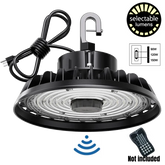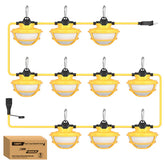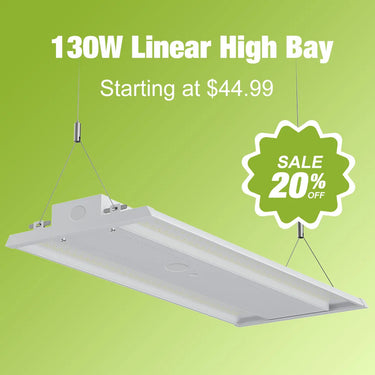LED Panel Light Purchase Experience Sharing
What is a panel light?
The principle of panel lights: In the early days of LED technology, it was mainly used as the backlight for display screens. Later, it gradually evolved into a dedicated lighting fixture. The first panel lights utilized the principle of LED backlighting, with the LED light source placed on the back, and the light passed through the diffusion plate to be directly projected downward, which is the direct-down type panel light.
Some use the principle of side-emitting light guidance, that is, the LED light source is placed around the lamp, passing through the light guide plate and the reflective plate to achieve the effect of direct projection on the front. It is also called a side-emitting panel lamp.
The common light sources for panel lights include LED, fluorescent tubes, etc. Currently, the most commonly used one is the LED light source.

Characteristics of Panel Lights
Shape and size of panel lights
The panel lights come in various shapes such as round, square, rectangular, and irregular shapes. The most common ones are square and rectangular.
Standard size
The square ones come in sizes of 1ft*1ft and 2ft*2ft.
The rectangular ones are 1ft * 4ft, 2ft * 4ft, 1ft * 2ft
Of course, it can be made into any desired size according to your requirements.
The light source of the panel lamp mainly uses LED light.
Panel lights with LED as the light source have the same advantages as LED lamps, such as long lifespan, high luminous efficiency, low power consumption, low energy consumption and environmental friendliness.
It also has the unique features of panel lights. Therefore, LED panel lights have a large light-emitting surface, do not occupy space, have uniform light distribution, and have a simple appearance.
It has the advantages of easy maintenance, and is suitable for lighting in bathrooms, kitchens, offices, etc.
The main structural components of the panel light
Aluminum frame has excellent heat dissipation performance, good texture and a stylish appearance.
The light source is currently mostly made of LED chips, and most of them are in the form of surface-mount chips. The commonly used specifications are 3528 and 5050.
The light guide plate is used because LEDs are point light sources. Therefore, appropriate optical design and materials, such as the light guide plate, are required to evenly guide the light.
The diffusion plate is mostly made of acrylic, PC, etc. Its function is to evenly distribute the light from the light guide plate.
The reflector reflects the light from the back of the light guide plate to enhance the light efficiency.
Other components such as the rear cover plate, mainly serve the functions of sealing and heat dissipation.
The driving power supply is commonly available in the form of a constant current source or a constant voltage and constant current source. The constant current source has a high cost-performance ratio. The constant voltage and constant current source has stable performance, but its efficiency is not as high as that of the constant current source.
Install the components, which may include steel wires, brackets, screws, etc., to facilitate the installation of the panel lights. The installation methods include exposed installation, embedded installation, hanging installation, and flush installation, etc.

How to Choose Panel Lights
The appearance characteristics of panel lights: based on shape, style, and design features
There are square panel lights, rectangular panel lights, circular panel lights, and special-shaped panel lights which are irregular in shape, such as leaf-shaped panel lights and rhombus-shaped panel lights. The specific choice should be based on your personal preference and the existing decoration style.
The size of the panel light
The sizes of the panel lights are 7 inches, 9 inches, 12 inches, etc.
The size of the panel light is usually expressed by the lengths of its two sides. Common sizes include 1ft * 1ft and 1ft * 2ft.
Generally speaking, a 1ft by 1ft size is suitable for rooms of about 3 to 8 square meters, with a power of approximately 10W. A 1ft by 2ft size is suitable for rooms of about 6 to 12 square meters, with a power typically around 18W. The specific applicable area and power may vary due to differences in light sources, optical design, structural design, and light output rate among various manufacturers.
Common sizes include 1ft * 4ft, 2ft * 2ft, and 2ft * 4ft, among others. Of course, customization can be done as per requirements, but there will be quantity limitations.
The optical performance of the panel lights
The comprehensive technical indicators include,
In terms of optical performance, it includes spectrum, chromaticity, luminance, such as the peak wavelength of light emission, spectral bandwidth, axial luminous angle intensity, color temperature, color tolerance, luminous flux, radiant flux, luminous efficiency, color coordinates, color purity, dominant wavelength, color rendering index, illuminance, and light intensity. For white LED, color temperature, color rendering index, and illuminance are the most important technical indicators.
We are using it on a daily basis, and mainly with white light for illumination. We focus on parameters such as light intensity, luminous flux, color rendering index, and color temperature.
The color temperature of the panel light
Panel lights are usually installed in kitchens, bathrooms, offices, etc., in areas that require high brightness. Therefore, they are often chosen to be cold lights with a color temperature above 5000K. Of course, the color temperature of panel lights ranges from low to high, and you can choose according to your own needs.
The brightness of the panel lights
The brightness of the panel light is usually related to its power and luminous flux. The greater the power, the greater the luminous flux. With the same light-emitting area, the panel light will be brighter.
Based on the light emission characteristics of the panel lights, there are two types of panel lights.
One type is the back-lit panel lamp. This type of panel lamp uses a diffusing plate and related optical design to mix light. It is generally thick, has uniform light output, and has high brightness.
One type is the side-emitting panel lamp. This type of panel lamp achieves uniform light emission through a light guide plate. It has lower brightness and higher processing requirements. Generally, it is relatively thin.
The heat dissipation performance and structural design of the panel light
Since LEDs are semiconductor light-emitting devices, they are highly sensitive to heat. Therefore, the temperature of the PN junction and the overall heat dissipation performance of the lamp are of great significance. Generally, top-quality lamps, which have fully considered the heat dissipation structure from the packaging level to the entire lamp, as well as the aesthetic appearance structure, have also fully taken into account the use of expensive chips, leading technologies and materials. For example, high thermal conductivity long-life chip bonding agents, ultra-low thermal resistance materials, control of the overall thermal resistance, and keeping the temperature of the light source module as low as possible. Under normal circumstances, we should also consider using good heat dissipation structures and materials, such as aluminum materials, which still have good heat dissipation performance. Poor heat dissipation performance will seriously affect the brightness and light decay of the lamp, and thereby affect the lifespan of the lamp.
The electrical performance of the panel lights
Power performance
The most common method is constant current drive. The higher the efficiency, the better. The output current stability of the power supply should be as high as possible, that is, the ripple current should be as small as possible. The power factor of the power supply should be as high as possible, which indicates that the influence of the power supply is small. The higher the efficiency of the power supply, the better, indicating that the conversion efficiency of the power supply is high and energy saving.

Power level
It can be selected based on the size of the room, the size of the lamps, and the required brightness. Generally speaking, the power of the panel lamp is closely related to its size. You can refer to the following size references for the panel lamps.
The materials of the panel lights
Framework
Choosing a frame with high strength can make the lamps more durable. Commonly used materials include aluminum alloy, PC, steel, and so on.
Diffusion plate
The function of the diffusion plate is to evenly disperse the light. Materials with good light transmittance should be selected, such as acrylic, PC, PS, etc. Generally speaking, the light transmittance of acrylic reaches 92%, but its anti-aging effect is slightly inferior. Therefore, one needs to make their own choices.
Light guide plate
The function of the light guide plate is to reflect and guide light, which directly affects the light efficiency and light attenuation of the entire lamp.
Panel light installation method
The advantage of concealed installation is its elegant appearance, but it may affect the brightness.
Hidden installation, embedded installation - typically used for the installation of integrated ceilings. The process is relatively simple. Remove the cover plate, and install the lamp using the spring clip on the lamp.
Hidden installation: There is another type of installation used for traditional ceilings, which requires using a knife to mark out the installation area. The installation process is slightly more complicated.
The advantage of concealed installation is that the brightness can be fully utilized, but the aesthetic effect varies from person to person.
The common concealed installation method is the suspended installation, which requires the use of suspension wires.
Check the workmanship of the panel lights
Many of the internal electrical characteristics of the panel lights are not easily observable by us. However, by checking the workmanship, we can to some extent gauge the quality of the product.

The sealing condition of the panel lights
The housing design of the panel lamp is simple and the sealing performance is excellent. It can prevent dust from entering, making maintenance and cleaning more convenient.
The waterproofing condition of the panel lights
Because panel lights are often used as kitchen and bathroom lights and the environment is quite humid, even when used in the dry areas of the kitchen and bathroom, the panel lights must have a certain level of waterproofing to be suitable for use in these areas.
Certification of the panel lights
Generally, ETL/cETL/FCC/CE/RoHS certifications are required.
The brand of the panel light
There are many brands of panel lights. The ones commonly known include General Electric, Acuity Brands, Osram Vishay, Cree Lighting, Panasonic, JCLGL, Philips, etc.
Here, we would like to highly recommend a brand that not only has excellent quality but also offers a good value for money. JCLGL Lighting
IV. Recommended Combat Models
Table Recommendation

V. Conclusion
The light-emitting surface of the panel lamp is large, making it very suitable for places that require a wide illumination range and uniform light distribution, such as kitchens, bathrooms, offices, etc. When used at home, the panel lamp is usually integrated in kitchens and bathrooms. For example, there are positions for panel lamps in the integrated ceilings of kitchen rooms.
When choosing panel lights, pay attention to factors such as the quality guarantee, size, color temperature, workmanship, installation method, and whether they support intelligent control, etc. Generally, panel lights have two structural types: one is side-emitting, and the other is direct-down type. The side-emitting structure has the advantages of being lighter and thinner in volume and having more uniform light. While the direct-down type has the advantages of having a larger luminous flux and brightness.
Of course, paying attention to the quality of the panel light source, the power factor of the driving power supply, efficiency, the heat dissipation issue of the panel light structure, etc., is very helpful for choosing a good panel light.

















